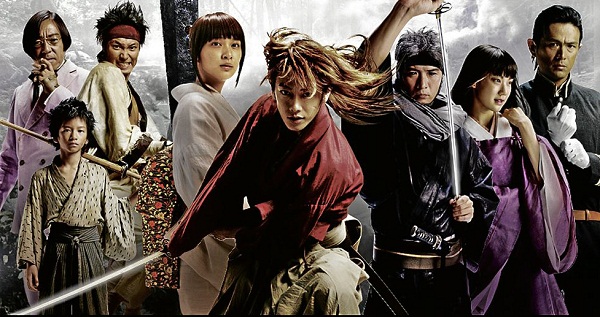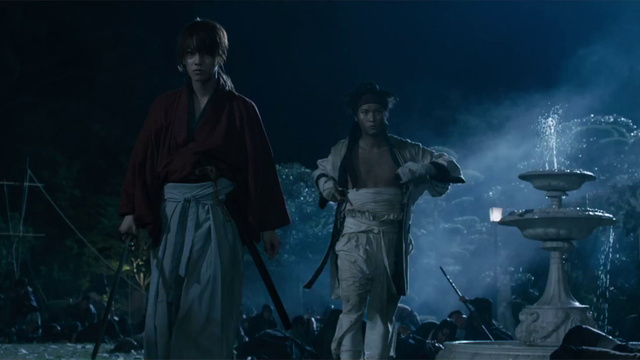Filtered By: Lifestyle
Lifestyle
Movie Review: 'Rurouni Kenshin' is a hack and slash live-action treat
By Mikhail Lecaros
Successfully translating anime-–Japanese involvement notwithstanding–-into live-action has always proven to be an elusive beast.
Results vary from the good (“Space Battleship Yamato”, “Speed Racer”), the bad (“Initial D”, “Cutie Honey”) and the just-plain ugly (“G-Saviour”, “Guyver”, “Dragonball Evolution”). Sticking too close to the source material risks alienating audiences who may not be familiar with the conventions and sensibilities being referenced, while straying too far from the source has the danger of estranging the fan base that justified the creation of a movie in the first place.
“Rurouni Kenshin” is based on the long-running anime and manga of the same name, and sidesteps the graveyard of mediocrity. It deftly balances the elements that made the show a modern-day classic with the needs of a live action motion picture. This multi-million dollar adaptation is a lavish, action-packed production that pays sufficient tribute to its origins without insulting anyone's intelligence.

The cast, led by Takeru Sato's Kenshin, are excellent realizations of their animated counterparts.
The bulk of the film takes its plot from the anime’s first two story arcs, with a few sequences lifted directly from the OVA (original video animation) mini-series that chronicled the protagonist’s bloody backstory for good measure.
“Rurouni Kenshin” begins in 1868 during the waning days of the Bakumatsu era, specifically, the Battle of Toba-Fushima, where Imperial forces (seeking to return power to the emperor) triumph over the ruling Tokugawa Shogunate, ushering in the Meiji era.
At this time, Himura Kenshin (Takeru Sato, of “Kamen Rider Den-O” fame) is the deadliest, most feared assassin in Japan, his martial skills having earned him the title of “Hitokiri Battosai.” With the end of the civil war, Kenshin sees a chance to leave his bloodthirsty life behind, becoming the “ru ouni” (wanderer) of the film’s title.
Ten years later, Kenshin’s nomadic existence is disrupted when he is drawn into an opium plot concocted by gangster Kanryu Takeda (Teruyuki Kagawa, gleefully chewing the scenery), whose enforcer, Jin-e (Koji Kikkawa) is every bit as ruthless as the wanderer used to be. Along for the ride are Takani Megumi (Yu Aoi, “Hula Girls”), a gifted doctor with a checkered past, Sagara Sanosuke (Munetaka Aoki), a brawler who’ll do anything for a fight and/or a meal, and Kamiya Kaoru (singer/model Emi Takei), the headstrong owner of a fencing school striving to uphold her father’s legacy.

The anime-inspired action is superb, with several applause-worthy moments.
Sadly, fan-favorite characters Saito Hajime (a pitch-perfect Yosuke Eguchi) and Sanosuke get short shrift in their big-screen debuts. In the case of Saito, the former Shinsengumi captain-turned-police officer’s personal history-based storyline with Kenshin is condensed to the point of near irrelevance, his very presence hovering dangerously close to glorified fan service.
This is especially evident during the final battle where, after much build-up, his big moment is so awkwardly edited and executed, I had trouble figuring out what I’d just seen. Fortunately, Sanosuke, despite randomly popping in and out of the plot as necessary, gets several applause-worthy moments.
Of the cast, it is Sato’s portrayal of Kenshin that comes as a revelation. Formerly known for lightweight pretty-boy roles, the former Masked Rider asserts himself well here, projecting cold-blooded efficiency in the “Battosai” flashbacks and exuding extreme likeability later on as the wide-eyed wanderer with a heart of gold.
While it would have been easy to spread out the introduction of the characters over two, or even three, movies, so much obvious time, effort and love was poured into these 134 minutes that it’s hard to fault the filmmakers for their enthusiasm. Save for Yu Aoi (who is neither old nor attractive enough to be the foxy physician she portrays) everyone looks just like their cartoon counterparts, in manner and attire.
Amusingly, while the fidelity to their 2D origins means that the main cast are the only ones out of place in a largely-accurate screen representation of 19th century Japan, you’ll probably be having too much fun to notice.
The film fares well in the story department, stumbling only in its depiction of Kenshin and Kaoru’s budding relationship. Perhaps owing to Takei’s relative lack of acting experience, there is little by way of chemistry between her character and Sato’s. Her inexperience is particularly apparent during an impassioned plea to Kenshin’s humanity during the film’s climactic showdown; her delivery is so overwrought it comes across as slightly comical.
Fortunately the action sequences, from the sword fights to the fisticuffs, are top-notch, substituting intricate wire work, editing and choreography for computer-generated trickery to create a cumulative effect on the viewer that is visceral bliss.
Special mention must be made of “Rurouni Kenshin’s” multitude of Philippine fans; raised on years of reruns on cable and free TV, their massive outpouring of requests and messages-–posted on various cinemas’ Facebook pages–-since the first trailer debuted over a year ago played no small part in getting the film screened in the Philippines. And it was in Japanese, to boot!
Regardless of some rough spots, “Rurouni Kenshin” is an overall satisfying experience that anyone looking to adapt an anime would do well to emulate.
Having already made US $67 million in its native Japan (with more on the way from 60 other countries) the viability of this franchise is indisputable. If the packed house of cheering fans I saw the film with was any indication, I won’t be alone in awaiting the inevitable sequel.--KDM, GMA News
All photos courtesy of SM Cinema.
"Rurouni Kenshin" is currently screening in SM Cinemas nationwide.
All photos courtesy of SM Cinema.
"Rurouni Kenshin" is currently screening in SM Cinemas nationwide.
More Videos
Most Popular



